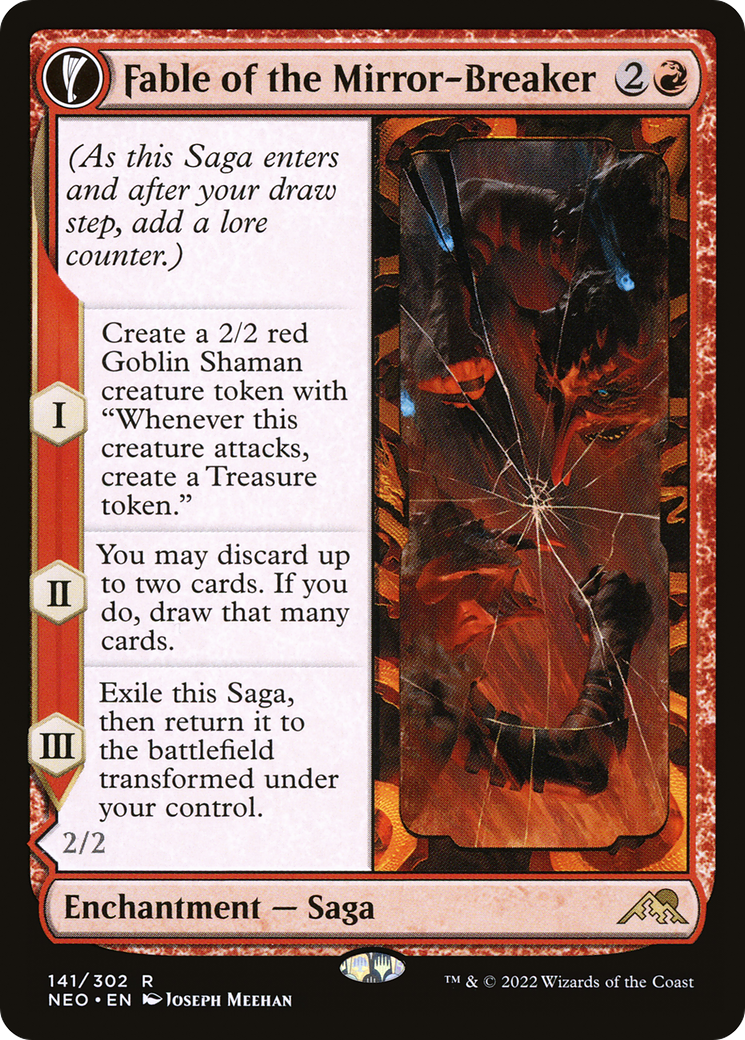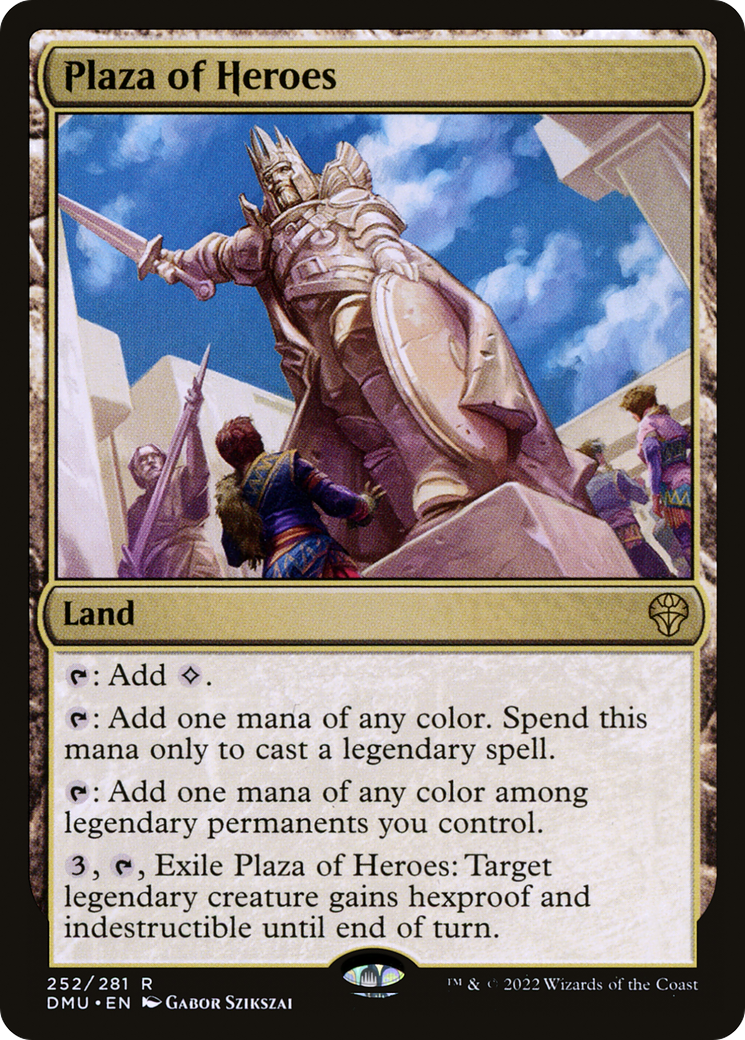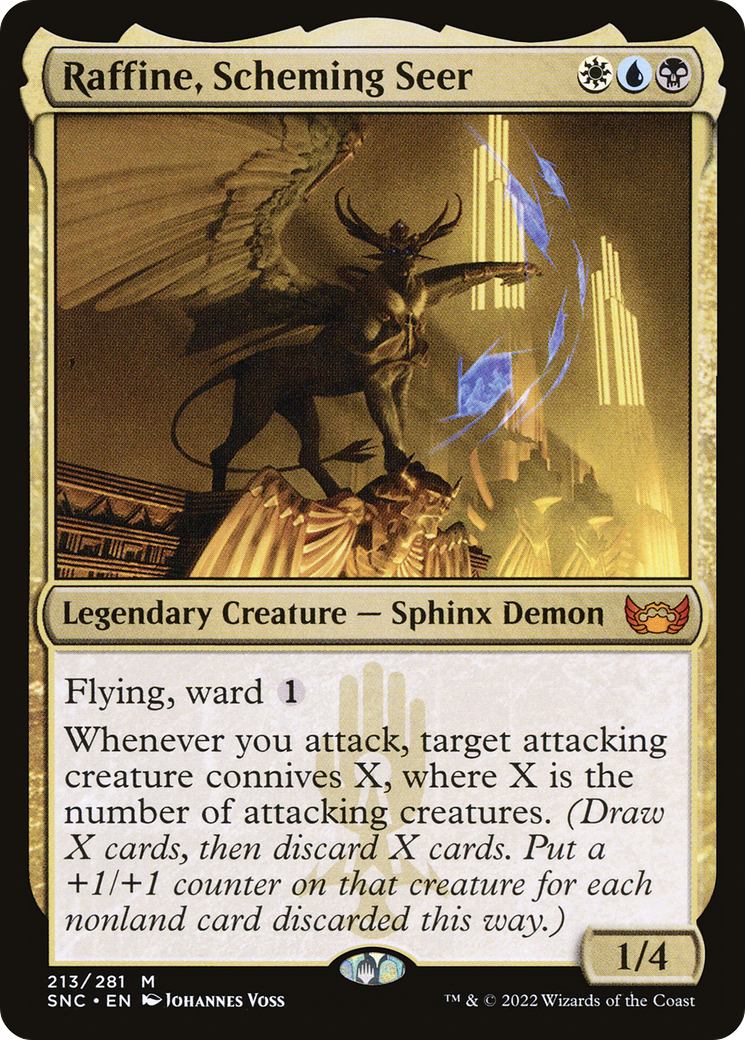Like many others in the Magic community, I was thrilled to watch a paper Pro Tour again. PT coverage has been essential to my Magic journey: I vividly remember struggling to stay awake in my freshman dorm’s living room (and eventually succumbing to sleep on the couch) while Reid Duke, Ken, Gerry and Salvatto battled in the Top 8 of PT Rivals of Ixalan, half a world away.
The first match I ever watched was RIW legend Patrick Chapin winning PT Journey into Nyx, and that was when I realized I wanted to play with cards that were better than those in my starter deck. Watching some of the game’s old greats do battle with those who dominated the online era was everything I could have wanted in a return to in-person play.
If you’re like me, you turned off coverage afterward and started thinking about how cool it would be to play on that stage. If that’s the case, I’m here to help you get there! The upcoming Pro Tour in Minneapolis is Standard, as are this round of Regional Championships (RCs). There hasn’t been much reason to play Standard if you weren’t qualified for Arena Championships in recent years, but now that it’s seeing wider play, people are realizing just how fun a format this particular iteration is.
Standard challenges on Magic Online (which have previously gotten as few as 32 players) are now regularly firing with over 100, which is on par with Modern and Pioneer. Whatever your playstyle is, there is a deck that you can bring that will be able to compete and win matches. The games are interactive, with few decks that just end the game quickly and relevant decisions on both sides of the table.
The Level 0 deck, Grixis, is a midrange deck, but there are also several flavors of aggro and combo, as well as a control deck or two. In this article and in the coming weeks, I’m going to break down the format for you and give you the tools to succeed as you start to prepare for your Regional Championship.
The defining feature of the format is that it’s very fair. To some extent, every deck’s plan includes interacting with the opponent’s board and winning with creatures. Even the over-the-top combo deck’s plan involves cheating Atraxa, Grand Unifier into play ahead of schedule. If you draw 6 cards, you still need to get your hits in with Atraxa to close the game out. In my view, there are four cards that are pillars of the format.
Fable of the Mirror-Breaker is likely the best card and is the glue that holds Grixis Midrange together. Wedding Announcement, Reckoner Bankbuster, and Thalia, Guardian of Thraben are some of the other most powerful cards. Some formats, like Pioneer, feature decks (like my favorite, Lotus Field) that reward you for knowing the ins and outs of your own deck while not punishing you for being unfamiliar with your opponent’s. To succeed in this Standard format, you will need to know your deck but also have a good idea of what your opponent’s game plan is.
To analyze the metagame, I pulled data from two weeks’ worth of Standard challenges, as well as two of the Regional Championships from this past weekend. Over the course of two weeks (4 challenges), these were the representation in Top 16s:
Grixis Midrange 33%
UW Soldiers 17%
Mono-Red Aggro 17%
Atraxa (all variants): 11%
Mono-Blue Tempo: 6%
2 copies each of Big White Control and Esper Legends
At the RC in Japan, the most-played decks were Grixis Midrange, Esper Legends, Mono-Red, Mono-Blue and Reanimator (Atraxa). GW Toxic, Jund Midrange, Mono-Red Aggro, and Reanimator were the widely-played decks that had winrates over 52%. Grixis suffered with a 42% winrate. This was the Top 8:
The RC on the same weekend in Melbourne, Australia told a much different story. Zen Takahashi won with a Grixis deck that had an excellent plan for the mirror. The most played decks were Grixis with 28% of the field (the same as Japan), Mono-White Midrange, Mono-Red, Soldiers and Mono-Blue. Soldiers (59%) and Grixis (53%) were the only widely-played decks with a winrate above 51%. The top 8 was dominated by RB decks, with the Rakdos deck being essentially Grixis without counterspells:
What this tells me is that players will be rewarded for predicting the metagame. Grixis is going to be the most-played deck at any large tournament, but there are good tools to fight it. Choosing the best anti-Grixis deck is a difficult task, and tuning your Grixis list to beat the field will pay massive dividends. The prevailing wisdom was to use Bladecoil Serpent and Siphon Insight to go over the top in the Grixis mirror. Zen and his team decided to cast Razorlash Transmogrants in the mirror, and getting aggressive gave them several PT invites and a Worlds slot: now, it’s time for Grixis players to adapt and see if there’s a plan that can successfully sidestep the aggressive plan. I don’t think that any deck is going to get pushed out of the format, at least not for longer than a week or two.
In future articles, I’ll be doing deeper dives on the big decks, including different ways you can build them and what I think the best plans are. For now, I’ll give a snapshot of each deck and talk about its strengths and weaknesses so that you can evaluate the right choice for your expected metagame.
The Level 0 choice in the format. This is going to be the most-played deck at any tournament you attend. It leverages powerful threats like Fable of the Mirror-Breaker and Corpse Appraiser that are good on board while getting card advantage, and uses cheap counterspells and removal to disrupt its opponents. While it is weak to enchantments like Wedding Announcement and to planeswalkers, the powerful Invoke Despair serves as a catchall answer that Grixis colors don’t usually have access to.
It is difficult to go over the top of due to an abundance of cheap countermagic like Make Disappear, Negate and Disdainful Stroke.
The decks that are seeing the most success against Grixis are ones that go underneath it, like Mono-Red and GW Toxic, as well as Mono-Blue Tempo, which blanks most of Grixis’s interaction and preys on its tendency to play at sorcery speed.
If Grixis is deck 1A of the format, UW Soldiers is 1B.
You get one of the best manabases in the format, with Fortified Beachhead essentially acting as Tundra with upside as well as Mishra’s Foundry giving you staying power against sweepers. This is one of the most resilient beatdown decks I’ve ever seen, with Skystrike Officer, Siege Veteran, Valiant Veteran and Recruitment Officer all giving you card advantage and ways to spend your mana in the late game.
This is the best deck for spending all of your mana from turn one onward. Despite being able to draw a lot of cards, it can be quite weak to sweepers like Brotherhood’s End and Burn Down the House, and you need to always have Sheoldred, the Apocalypse in mind against black decks. The ability to sideboard into countermagic means that it’s very easy to maintain a good position, but it struggles to catch up if you fall behind on board.
This is a deck that many are turning to to beat Grixis.
It has an abundance of haste creatures and cheap burn spells, including Monastery Swiftspear and Bloodthirsty Adversary, however, it doesn’t have much staying power once your threats get answered. It will be more mana efficient than most of its opponents, but it struggles to win when the opponent establishes a board presence with creatures that are too big for Lightning Strike and Play with Fire.
One of the coolest interactions against Grixis is that a turn 1 Kumano Faces Kakkazan will almost always mean that the turn 2 play won’t be able to be answered by a Cut Down, which is Grixis’s best way to break serve.
Mono-blue tempo has a relatively simple plan.
It plays mostly at instant speed, using cheap counterspells and cantrips to amass a large graveyard, at which point Tolarian Terror and Haughty Djinn become very efficient threats that you can protect with your counterspells and blink effects like March of Swirling Mist.
Some people have thought about adding a second color, but that means you lose Flow of Knowledge, which is your best card against slow decks operating at sorcery speed. You are strong against Grixis because most of their threats cost 3 mana, which makes it difficult for them to get under your counterspells, and Go for the Throat is their only removal spell that lines up well into your threats. You struggle against low to the ground decks like Soldiers, Red and Toxic because you don’t play removal for the threats that go underneath your counterspells.
This is a tap-out midrange deck that tries to spend all of its mana every turn and accumulate incremental advantages with planeswalkers and enchantments.
You have cheap removal in Lay Down Arms and Ossification, and you get ahead on cards with Reckoner Bankbuster, Serra Paragon and Roadside Reliquary.
Big White loves to grind, but its expensive threats can be weak against countermagic, especially because it struggles to produce a fast clock.
Atraxa, Grand Unifier is one of the most powerful cards in the format to resolve, with a Niv-Mizzet effect as well as a body that will automatically be the best creature on any boardstate.
You often find Atraxa in a Grixis shell, forgoing the Invoke Despairs and Sheoldreds, instead using Blood tokens from Bloodtithe Harvester and Fable of the Mirror-Breaker to put Atraxa into the graveyard before reanimating it with Cruelty of Gix. It has a good fair gameplan, but in my experience it doesn’t actually go over the top of other fair decks very effectively because it is very easy to stop the plan A of reanimation with Duress, countermagic, or graveyard hate like Unlicensed Hearse. I don’t think this is a very strong choice into the current field, but I may well be proven wrong.
Esper Legends is a beatdown deck that utilizes the power of Plaza of Heroes to cast some of the strongest cards across its three colors, all of which have very unique effects.
A curve of Thalia into a Raffine, Scheming Seer will make it very difficult for opponents to interact. This deck has powerful cards against Grixis like Ao, the Dawn Sky and Dennick, Pious Apprentice (which lines up very well into Corpse Appraiser but very poorly into Cut Down), but is quite vulnerable to creature removal and sweepers.
You do get to play Wedding Announcement and counterspells postboard to make you more resilient. One of the biggest draws to this deck is that all of your legends discount Eiganjo, Seat of the Empire and Otawara, Soaring City. This means that these lands are essentially spells in the midgame, and you can play 27 or 28 lands comfortably without ever worrying about getting flooded (Raffine and Raffine’s Tower also act as good flood insurance). This is also one of the best homes for Skrelv, Defector Mite, which for my money is the best one-mana spell in the format.
Discounted by many early on in the format, this is one of the breakout decks of the past weekend due to its ability to prey on unprepared Grixis players.
You play a bevy of one- and two-drops, which do a good job of going underneath Grixis. You also have an incredibly powerful manabase, with The Seedcore and Mirrex giving you mana sinks that have a strong impact on the board.
Skrelv’s Hive is a one-card gameplan against Grixis: from my testing, the Grixis player needs to get aggressive (ideally with a Sheoldred) if they aren’t able to Duress or counterspell the Hive, as Invoke Despair tends to be too slow. Your non-hive draws, however, are quite weak to sweepers. My San Diego testing teammate, Zoe, shared the insight that Toxic really struggles against creature decks like Soldiers because it’s much harder to win in combat when they are able to block well.
That’s my introduction to Standard! Let me know what decks catch your interest and what you’re excited to play at your upcoming Regional Championship. If the tournament were tomorrow, I would run back Zen’s Grixis list that I used to top 8 the most recent Standard Challenge, but I’m excited to keep exploring such a deep format. Join me next week when I dive deep into Grixis midrange and share insights from my San Diego testing process. Until next time!





















